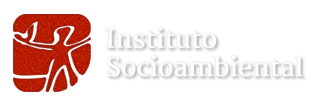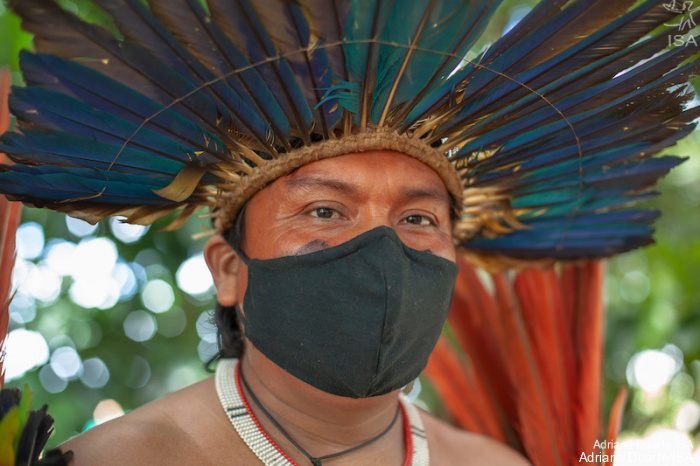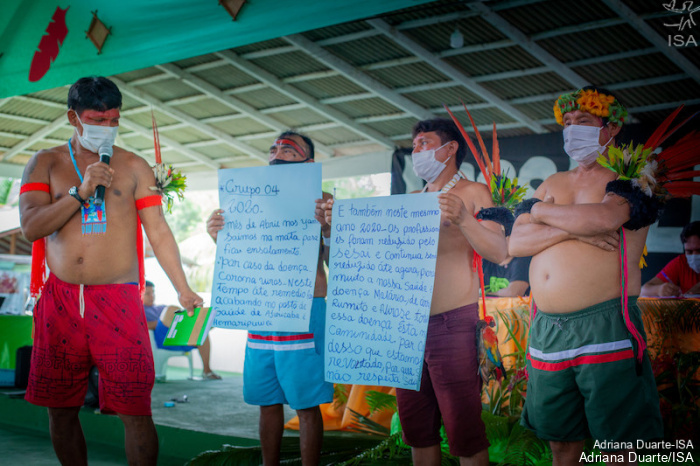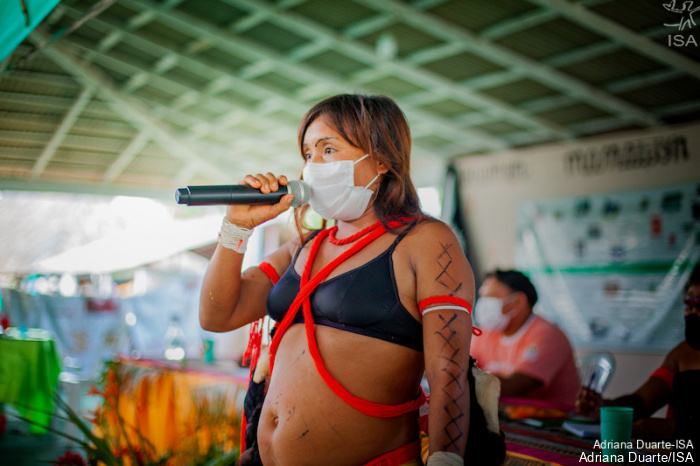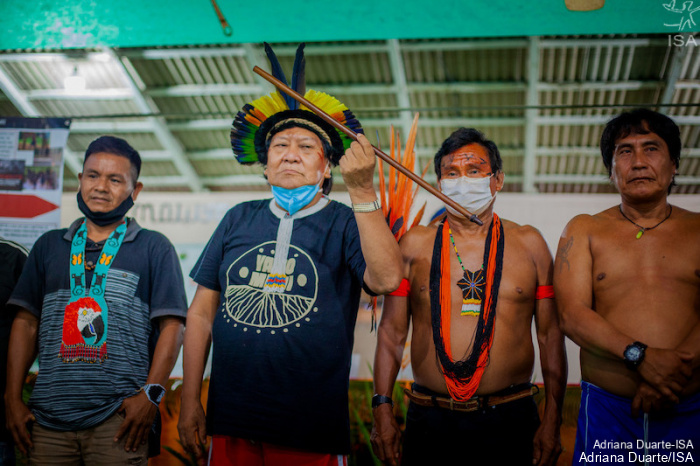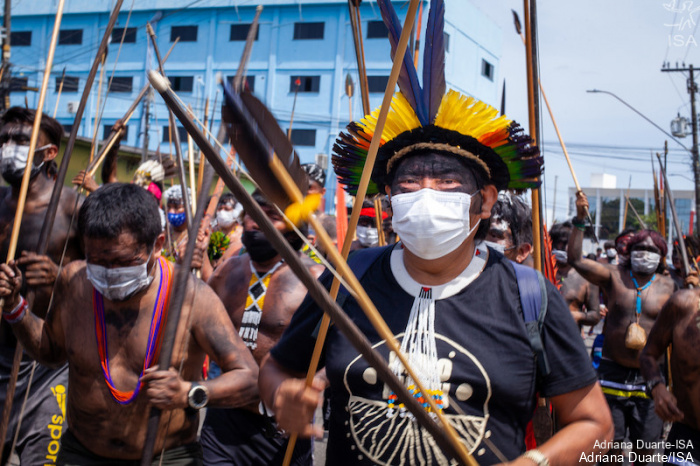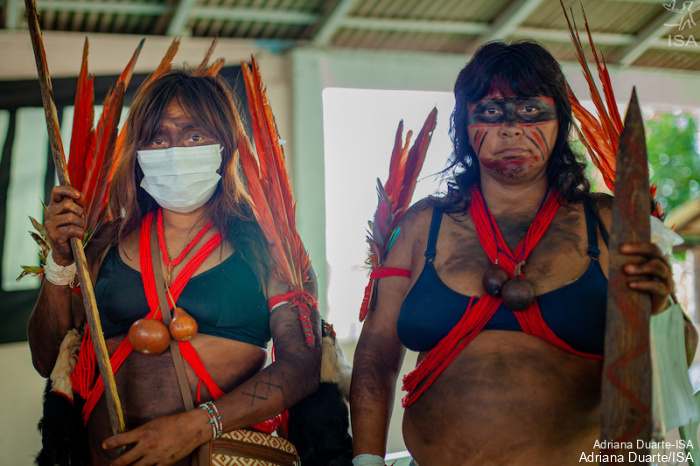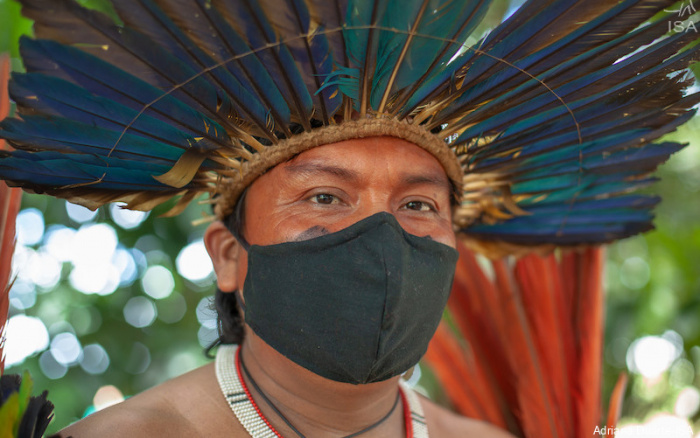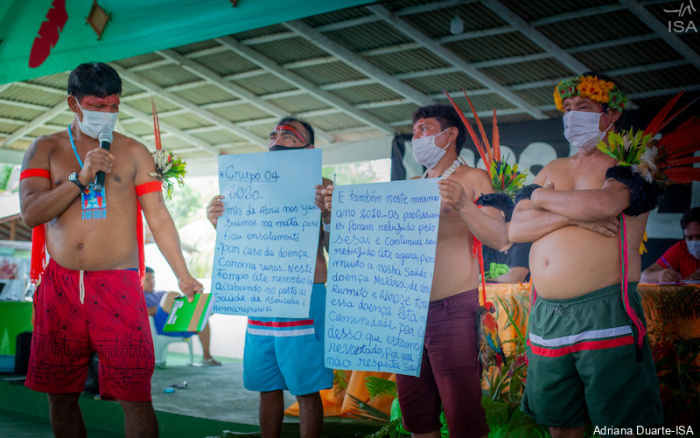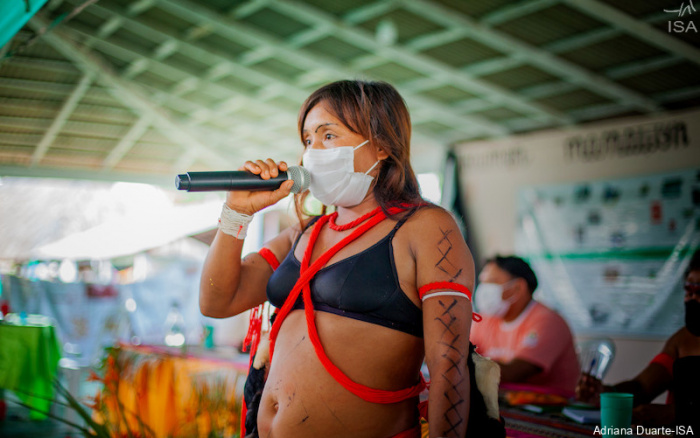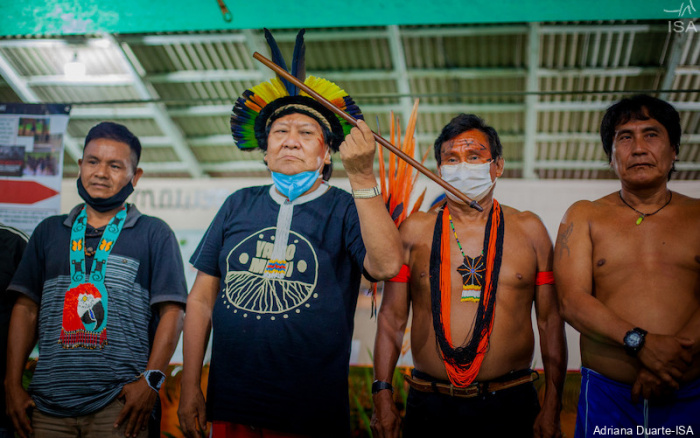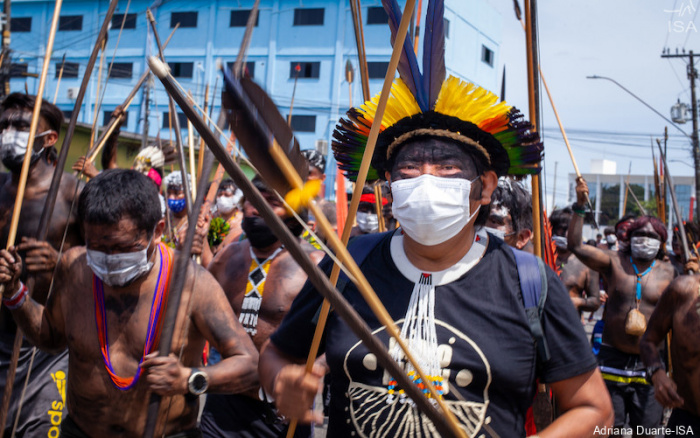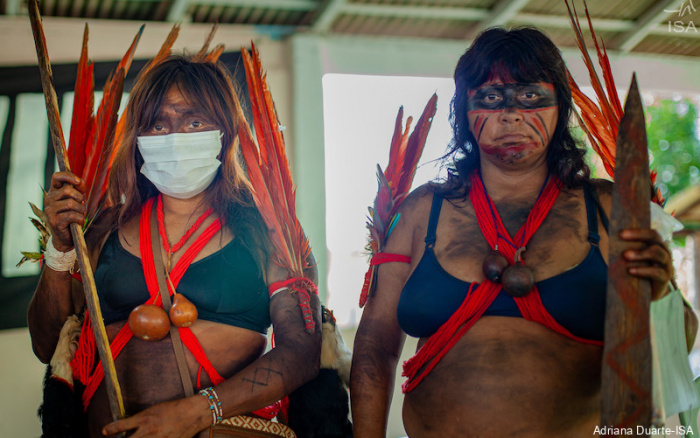Você está na versão anterior do website do ISA
Atenção
Essa é a versão antiga do site do ISA que ficou no ar até março de 2022. As informações institucionais aqui contidas podem estar desatualizadas. Acesse https://www.socioambiental.org para a versão atual.
Surge in wildcat mining, collapse of healthcare and union between Yanomami Indigenous Land communities mark the II Leadership Forum
Wednesday, 03 de November de 2021 
Mothers weep for their children
Esta notícia está associada ao Programa:
In this meeting of Yanomami and Ye’kwana leaders, indigenous people denounce the government’s neglect of healthcare and indifference toward the wildcat mining invasion that is destroying indigenous land
There were hours of travel by boat, plane and highway. Yanomami and Ye’kwana leaders left the Yanomami Indigenous Land, situated along the border with Venezuela, between the states of Amazonas and Roraima, on their way to the Tabalascada Indigenous Land, in the municipality of Cantá, in northern Roraima, a region where part of the Wapichana people live. Over 70 indigenous leaders traveled to participate in the II Yanomami and Ye’kwana Leadership Form, which was held September 4 to 8. Already vaccinated with two doses, the leaders followed health protocols designed to contain Covid-19: they were tested at the beginning and end of the meeting, and used masks and hand sanitizer daily. Behind the masks, it was still possible to discern smiles upon the faces of old friends and warriors.
Watch the video report on the event here
The debates, discussions, reports and production of documents with complaints to public agencies involved representatives from the seven associations of the Yanomami Indigenous Land: Hutukara Associação Yanomami (HAY), Associação Wanasseduume Ye’kwana (Seduume), Associação das Mulheres Yanomami Kumirayoma (AMYK), Associação Kurikama Yanomami (AKY), Associação Yanomami do Rio Cauaburis e Afluentes (Ayrca), Texoli Associação Ninam do Estado de Roraima (Taner), Hwenama Associação do Povo Yanomami de Roraima (Hapyr) and also the District Indigenous Health Council for the Yanomami and Ye’kwana (Condisi-YY).
Complaints from various regions of the indigenous land
In this second edition of the Forum—the first held in 2019—men and women discussed the major problems facing their communities. According to the Hutukara Associação Yanomami (HAY), as of September 2021, the cumulative area of forest destroyed by illegal mining on Yanomami Indigenous Land surpassed the mark of 3,000 ha, an increase of 44% in relation to December 2020. The Waikás, Aracaçá, and Kayanau regions are most affected by the destruction, which has encroached on new regions, such as Xitei, where the illegal activity grew by 1000% between December and September of 2021.
According to information from the District Indigenous Health Council for the Yanomami and Ye’kwana (Condisi-YY), malaria has grown significantly in recent years. Last year alone over 27,000 cases of the disease were recorded. And, up to September of this year, cases have surpassed the 20,000 mark, further exacerbated by the presence of illegal mining.
During the II Forum, the director of HAY, Maurício Ye’kwana, emphasized the importance of leaders joining forces to fight illegal mining and other problems. “The Forum was created in order to bolster the resolve and presence of Yanomami and Ye’kwana leaders in one place to discuss the problems that we currently face in education, healthcare, encroachment by illegal mining and management of the territory.”
During the Forum, an indigenous leader, who because he fears for his life cannot be identified, said that he has received death threats and is being targeted by the illegal miners. “I’m fighting on my land. I’m a leader. Because I’m fighting, the miners are threatening me. The miners know what I look like. They are following me so they can kill me. The miners say: He is denouncing us. They call on other miners to kill me. They say: Kill him! Let’s get rid of him now. When he dies there will be no one to denounce us and we can open a large mine,” he said.
In addition to the death threats, the leader also reported that the fish are disappearing. “The river is dirty, this is why I am participating in the leadership forum, to denounce this.”
In the region of upper Mucajaí River, even with the operations of the Walopali Ethno-environmental Protection Base, in conjunction with the Brazilian army and National Public Security Force, leaders denounced that the military personnel is unable to control the strong presence of the miners, who travel back the forth daily on the river. “There in my community things are not good, everything is bad because of the mining on the upper Mucajaí River. We also went to register our complaint there at the Funai base. There they have the National Public Security Force and the Army, but they are unable to keep up with the miners who constantly pass through there. And I, as president of the Texoli Ninam Association (Taner) I am thinking about what we can do. I came here to speak to this meeting thinking that my people will end, they will die, this is why I am at the Forum,” affirmed Eliseu Xirixana Yanomami.
According to Francisco Xavier Yanomami, from the region of Maturacá, in addition to the illegal extraction of gold at the headwaters of the river that supplies the communities, the entry of illegal drugs is also a concern. “They are here. We have miners on our land. And what they do here is bad for our people. We do not want their friendship. We want the end of mining on our land. During this Forum we demand the end of mining, of drug trafficking and the use of drugs on our land.”
Discussions included the participation of members of the Indigenous Council of Roraima (CIR): coordinator Edinho Macuxi and attorney Ivo Cípio Wapichana. “We provide context on what is happening in Brazil, including the threats that indigenous people are suffering, primarily, on Yanomami Indigenous Land, which has been the target of heavy encroachment by illegal miners, by people that insist on entering, exploiting and destroying. So, our participation was also in the sense of reporting the threats that are occurring in Brazil, in the National Congress, in the executive branch and in the judiciary as well, that will affect the lives of indigenous people,” said the attorney for CIR.
Mothers weep for their children
Palimiu, situated along the Uraricoera River, is one of the regions that has suffered most from illegal mining activities. Since May of this year, more than 10 armed attacks have been carried out against the community, including the use of improvised explosive devices. One of the attacks resulted in the death of two Yanomami children from drowning.
Out of fear, the medical team abandoned their post, further worsening the situation: “There’s no healthcare. They left when the miners attacked us. We have no healthcare, this is why our children are suffering. Our children have stomachaches and diarrhea. Disease has come. And our children are suffering. I am outraged because my son has lost a lot of weight. I am weeping because of my son. I come here to denounce what is happening,” said a Yanomami mother. Yanomami women actively participated in the Forum with representatives who offered strong and emotional statements.
“They are destroying our lands, threatening our daughters. The land is already destroyed, full of holes and there are no more fish because the rivers are polluted, and no way to drink the water from the river,” said a Yanomami woman who, fearing for her life, did not want to be identified. She said that this is the first time she has participated in the Forum and that she had come to represent the women of her region. “We, the women who are here in the meeting fighting for our rights, will not give up this fight and we will grow old fighting.”
The person who came farthest to be present and speak at the Forum was Érica Vilela, from the region of Maturacá, near Pico da Neblina, located 140 kilometers from São Gabriel da Cachoeira, in northern Amazonas. To arrive at the Forum, Érica traveled two days by boat, an hour by plane and several more hours by road to the Tabalascada Indigenous Land. “I am here on behalf of the women, together with our relatives from here, for the purpose of joining forces, in a single fight, that we are waging, to pressure the Brazilian government to respect us, respect the people of the forest. We, Yanomami, know how to take care of the forest. We know how to take care of our Mother Earth, this is why we don’t want to be disturbed by the government. The government has to respect us. We indigenous people. People of the forest”, said the president of the Kumirayoma Yanomami Women’s Association (AMYK).
Yanomami healthcare collapsing
Marinaldo Sanöma, from the Kolulu community, in the region of Auaris, reported that although there is a health clinic in the community, there is no medicine for the treatment of malaria or the necessary inputs for exams, such as microscopes, slides and lancets. Another concern expressed by him is the lack of oxygen, an essential input for the treatment of pneumonia. “Because without medicines the children are dying, they are suffering, exhausted, without oxygen. Last month, three children died from malaria. This is why we are so sad.”
Because of the Brazilian government’s failure to act, mining on indigenous land continues to expand and has arrived in places where it did not exist before. “They are ruining our land, our meat, our river. We must go very far for game because the river and the stream where we used to fish is all polluted, it is completely contaminated, just mud, there are no more fish,” said Marinaldo.
The president of the District Indigenous Health Council (Condisi) of the Special Indigenous Health District for the Yanomami and Ye'kwana (DSEI-YY), Júnior Hekurari Yanomami, who represents the Yanomami and Ye’kwana together with DSEI-YY in the agency’s social control actions, also made a statement. His assessment is that healthcare on the Yanomami Indigenous Land is collapsing. “It’s the reason the Yanomami population is dying and, primarily, many children, for lack of treatment. They have not been seen by medical professionals, there is no action plan to fight malaria. Malaria is spreading throughout the entire Yanomami territory.” Júnior said that this year he has already sent numerous documents to DSEI-Y denouncing the deaths of children, lack of medicine, lack of medical professionals and even the trading of Covid vaccine for gold. “As president of Considi, I have already filed complaints with the regulatory agencies, with the Federal Public Ministry. I requested an action plan and immediate intervention of the government because the Yanomami people are dying.”
During the discussion about health, leaders reported numerous cases of deaths by preventable diseases, such as malaria, pneumonia, diarrhea and even worms. Their communities wait for months for visits from health professionals, as is the case of the communities of the Xitei region, a difficult to reach location, in which the lack of public contracts for helicopter flights hampers healthcare and health indicators are nonexistent. The complaints were recorded in a letter from the Forum on the health of the Yanomami and Ye’kwana, submitted to the Federal Public Ministry in Roraima.
“It was the Brazilian government that brought the powerful xawara (infectious disease) upon us”
Leader and shaman Davi Kopenawa Yanomami paid close attention to the personal accounts, debates, and participated in the workgroups. Davi described how he feels today seeing his people die from government neglect and the anti-indigenous policies it has implemented. He recalled that the xawara (infectious diseases) was introduced by the napëpë (non-indigenous people) with the opening of the roads. “We fell ill a long time ago. The xawara did not emerge recently; it has existed for a long time. In the past we lived well and were healthy, but, the powerful xawara arrived, there where the napëpë appeared, where they built the roads. The napëpë authorities made the road into our forest and made us sick. The napëpë who came and the truly strong xawara that came, I know them. This is how the first one happened, in 1986, they brought us the real xawara. Who brought it to us? It was the Brazilian government that brought the powerful xawara upon us. Measles, malaria, pneumonia that devours our chests, the coughing. These were the diseases that they brought upon us.”
The worsening quality of life on Yanomami Indigenous Land is based on the memory of the healthy lives that elders enjoyed, and this realization leads to anger. During the meeting, the leaders formulated two letters, one denouncing the intense mining invasion and demanding effective enforcement; the other, with complaints regarding the healthcare situation, where they demand special attention to the healthcare they are entitled to. Once again, the position of the Leadership Forum of the Yanomami Indigenous Land was clear: Illegal mining is very serious and none of us will permit this on our indigenous land. We had already won this fight in the past. The government is obligated to end illegal mining activities on our land and they cannot just say that it is too difficult a task. They must do their duty and leave our urihi (forest land) alive.
“We, together with the leaders and the shamans, sit down together and created a document, and wrote about this xawara. Things are bad, when these things happen, we submit these words, this is the right way. If there are no documents, the napëpë pay no attention. The napëpë don’t hear the words. They don’t say, "I will work, I will do it." When they receive the actual document, the words that we write, where will we deliver them? For those of you who are our friends first, for those of you who are our advocates, we will deliver them to you first.”
Through the streets of Boa Vista
To mark the close of the Forum, the leaders of the Yanomami Indigenous Land held a protest on the morning of September 8, gathering in front of the Monument to the Miner, in downtown Boa Vista and walking through the streets of the city, with banners that read “Our fight is for life” and “Miners Out, Covid Out.” The demonstration ended with the submission of the documents from the Leadership Forum to the Special Indigenous Health District for the Yanomami and Ye’kwana (DSEI-YY), National Indian Foundation (Funai) and the Federal Public Ministry (MPF). Although they were not received by the DSEI-YY, the document was submitted through the MPF.
Evilene Paixão
ISA
Imagens:

